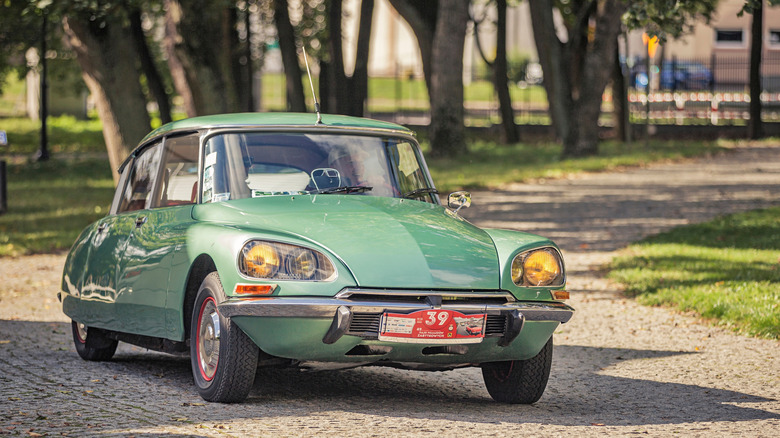What Was The First Car To Come With Factory Standard Disk Brakes?
Automotive technology is at a fascinating place right now. We've got fully connected cars, a plethora of automakers all vying to lead the field in terms of autonomous driving, and more tech than we care to even understand hidden behind multiple menus and huge curved screens. With technology like this stealing column inches at the moment, it's easy to overlook some of the more simple innovations that have been implemented over the years. Innovations like the first car to use first seatbelts, the first to boast an automatic transmission, or indeed, the first car to feature disc brakes as standard.
The story of who was first to feature brake discs is not a straight-forward one, as both Chrysler and Crosley — the latter being a small and largely forgotten American automaker — were experimenting with the technology quite early on, throughout the late 1940s. These attempts were complicated, expensive, and not entirely reliable, and so not really qualified to take the claim here. The real winner would come just a few years later, in 1955, and it's one of the most forward-thinking models the auto industry has ever seen.
The car we're talking about is the Citroen DS — a revolutionary model which boasted not just disc brakes as standard equipment, but also hydro-pneumatic suspension, and hydraulically operated features, namely the clutch, brakes, gearbox and steering. It's worth mentioning that two British automakers did beat Citroen to the punch, Jensen and Austin Healey, but Jensen only produced 53 of their disc-baring 541 Deluxe, and Austin Healey's so-equipped 100S was limited-run competition-geared car, and so neither can really take claim for offering disc brakes as standard equipment on a mass-produced 'road' car.
Here's how the tech made its way to mass produced road cars
It wasn't as if disc brakes just appeared in the very late 1940s, and then were very quickly adopted through the '50s. Rather, automakers had been playing around with this technology almost since the dawn of the automobile, with Lanchester fumbling around with paper-thin discs in 1902 being the earliest we can trace the tech.
However, it was the Jaguar C-Type which really demonstrated how a disc brake setup could perform when applied correctly. The sleek Jag competed in and won the 24-hour Le Mans endurance race in 1953 with Dunlop-developed discs and pads, and it was this impressive achievement which really caught the attention of automakers like Citroen at the time. The C-Type's influence is just one way in which racing technology has made 'normal' cars better over the years. It was after this point which sports car manufacturers began racing one-another to put disc-brake-equipped models onto the market first, with the aforementioned Jensens and Austin-Healey models leading the way for the likes of Triumph and its TR3, which joined the ranks in 1956.

